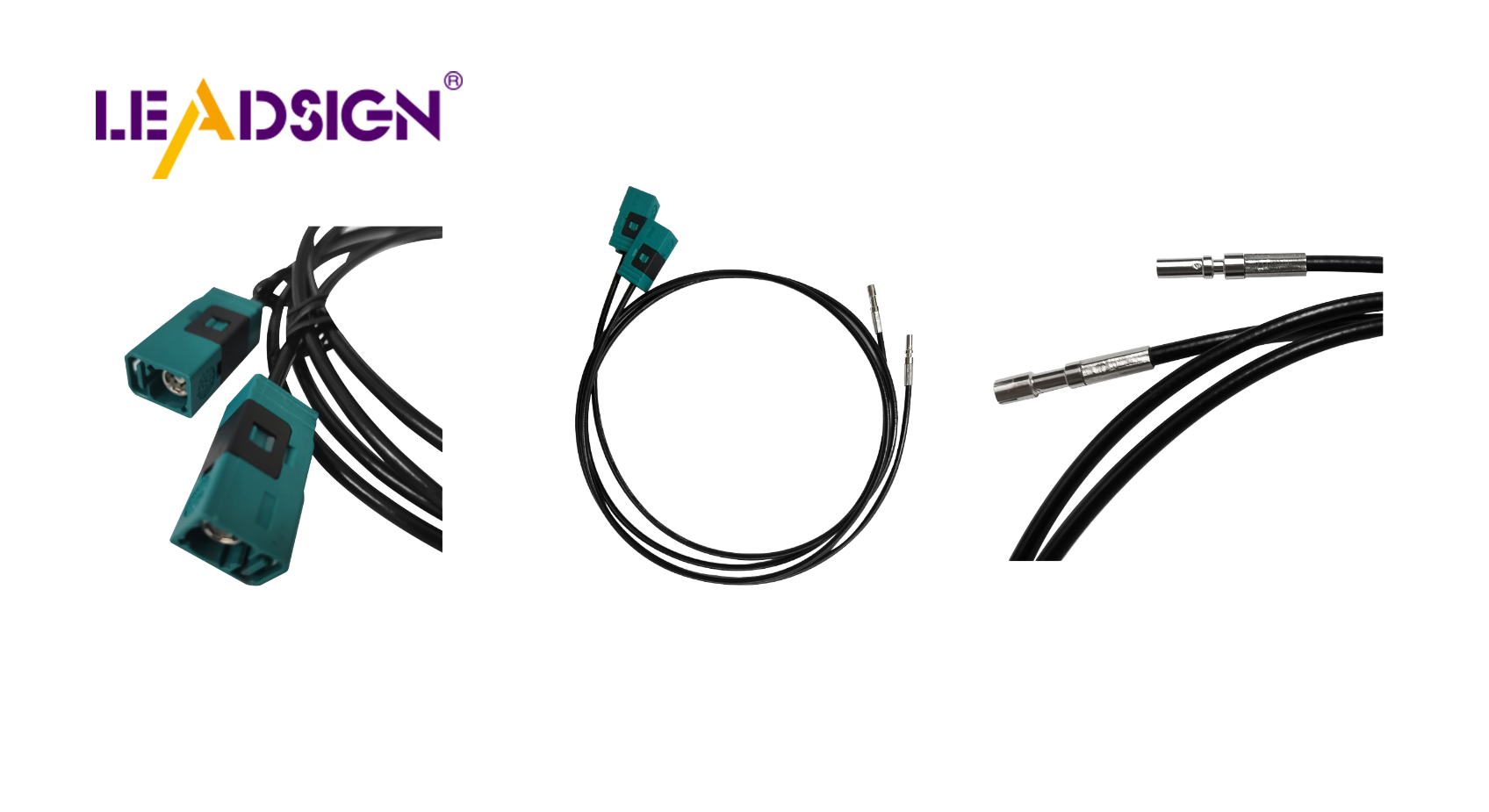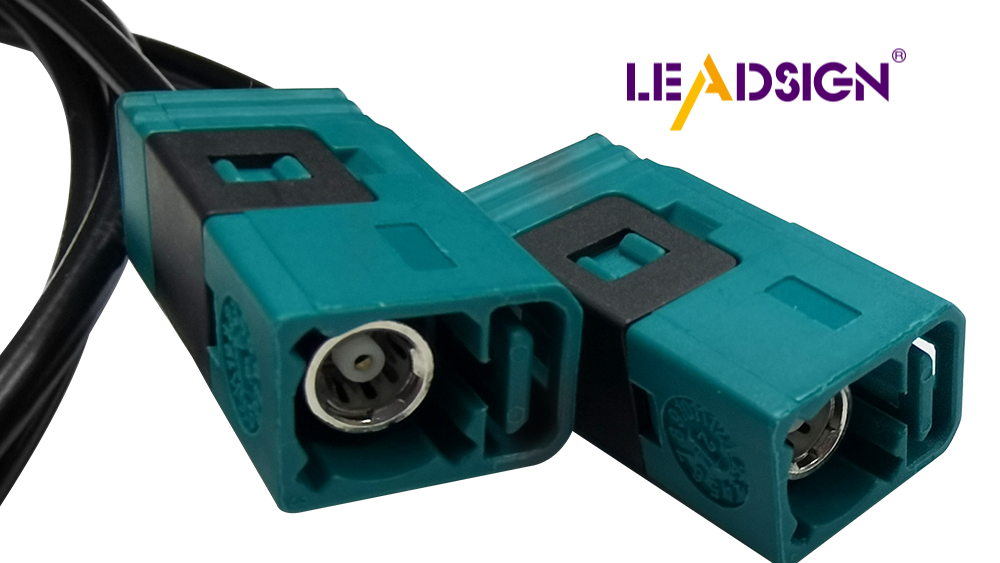Guide to Automotive Electrical Connectors Types and Applications

Automotive electrical connectors types are crucial components in vehicle systems. They play a vital role in facilitating the smooth transmission of power and signals within cars, ensuring optimal performance. In 2023, the automotive electrical connectors market was valued at approximately USD 6.71 billion, reflecting the increasing demand for electric vehicles and advanced car electronics. These connectors come in various types, each designed for specific functions to ensure reliability and efficiency. With advancing technology, automotive electrical connectors evolve by incorporating new materials and techniques to meet the evolving requirements of modern vehicles.
Understanding Automotive Electrical Connectors
Definition and Function
What are electrical connectors?
Electrical connectors are key parts in cars. They link circuits, letting electricity move between car parts. These connectors have different shapes and sizes for specific jobs. They help power and signals travel well in the car, making it work better.
How do they function in automotive systems?
In cars, connectors help parts talk to each other. They join wires so data and power can move easily. This helps things like lights and engine controls work well. Without them, cars might break down often, costing money and causing safety problems.
Importance in Modern Vehicles
Role in vehicle safety and performance
Connectors are important for keeping cars safe and working well. They make sure things like airbags work right. Good connectors lower the chance of problems that could be dangerous. As people care more about safety, they want better connectors in their cars.
Impact on vehicle electronics and communication
Connectors affect how car electronics work together. They help add new tech like GPS or Bluetooth. By moving data well, they keep modern systems running smoothly. As car tech gets better, connectors change to handle fast systems even in tough conditions.
The growth of car connectors focuses on being smart and eco-friendly. These changes keep them strong and useful for today's cars.
Automotive Electrical Connectors Types

Wire-to-Wire Connectors
Characteristics and uses
Wire-to-wire connectors are key parts in cars. They join two wires, letting electricity move easily between car parts. These connectors are made to handle tough conditions like shaking and heat. Their strong build makes them work well in things like lights and engine systems.
Common examples in vehicles
In cars, wire-to-wire connectors are often where fixing or changing happens a lot. For example, they are in the car's stereo system for easy plug-in and pull-out. Plug and socket connectors are a common type of these connectors, offering ease and trust in car use.
Wire-to-Board Connectors
Features and applications
Wire-to-board connectors attach wires to circuit boards inside cars. They help put electronic parts into car systems safely. These connectors keep signals moving well, making sure power flows right. They can stand up to rust and shaking, fitting modern car needs.
Examples in automotive systems
Car systems like music players need wire-to-board connectors to work best. These help new tech fit together smoothly, letting different parts talk to each other well. Automotive electrical connectors are built for cars, trucks, and buses to last long.
Board-to-Board Connectors
Description and functionality
Board-to-board connectors link two circuit boards in a car for good data flow. They're needed for tricky systems with many boards working as one. They give steady links so all electronic pieces run smoothly together.
Typical applications in vehicles
In cars, board-to-board connectors go into high-speed data areas like smart driver aids (ADAS) or vehicle talks (V2X). These help add new tech that boosts how cars perform safely today.
Uses of Automotive Electrical Connectors
Power Sharing
Connectors in power systems
Automotive connectors help share power in cars. They make sure electricity moves well from the battery to parts. Power connectors handle big electric loads, important for things like the car's main unit and power source. These connectors face tough conditions like heat changes and shaking to keep working well.
Examples of power sharing uses
In today's cars, power sharing includes linking the alternator to the battery and sending power to lights and the start system. Bullet connectors are used here because they connect and disconnect easily. They fit tightly, making sure power goes where needed, helping the car work better.
Signal Sending
Role in data communication
Connectors help send data and signals in car systems. They let information move between electronic parts like sensors and control units. This is key for running music systems, maps, and other cool features in new cars.
Examples in music and map systems
In music and map systems, connectors like custom RF connectors add connection features. These ensure signals move without problems for a good user experience. For example, they link GPS antennas to maps so drivers get correct location info. Using these connectors makes driving better by mixing tech with safety smoothly.
Safety Systems
Connectors in safety setups
Safety setups need strong electrical connectors. These make sure important parts like airbags and ABS work right. They must connect well to stop failures that could risk safety.
Examples in airbags and ABS
In airbags, connectors join sensors to controls so they work during crashes. In ABS, they send wheel speed signals to modules to stop wheels from locking when braking. Good quality connectors are crucial for keeping cars safe and protecting people inside.
Picking the Right Connector
Things to Think About
Weather conditions
When picking car connectors, think about weather. Connectors face heat, wetness, and shaking. Makers build them strong for these challenges. For example, engine connectors deal with high heat and fluids. Choose ones with good seals to last long.
Power needs
Power needs are key when choosing connectors. Each must handle certain volts and amps. Too much power can break them or be unsafe. Makers give details on each type's power limits. Pick ones that meet or beat these limits for safe use.
Rules and Following Them
Why rules matter
Following rules makes sure connectors work well together. Rules help them work in different places safely. They stop problems and make things safer. Makers follow rules to keep car systems top-notch.
Common car connector rules
Car makers use some main rules for connectors:
ISO 8092: Sets rules for road vehicle connectors.
SAE J2030: Lists needs for heavy-duty connectors.
USCAR-2: Gives tests for checking car connectors.
These rules make sure connectors are safe and strong. By using them, makers create parts that fit modern cars' tough jobs.
Picking the right car connectors is very important. They help cars work well and stay safe. Connectors are big in car jobs like building and fixing. As tech gets better, connectors will too. They will be more reliable and efficient. Keeping up with new ideas is key to using these improvements. Knowing why connectors matter helps people choose wisely. This makes sure cars run smoothly today.
See Also
Ford Fakra Connectors: A Comprehensive Guide
Understanding HSD Connectors in Automotive Sector
Significance of FAKRA Connectors in Auto Uses

